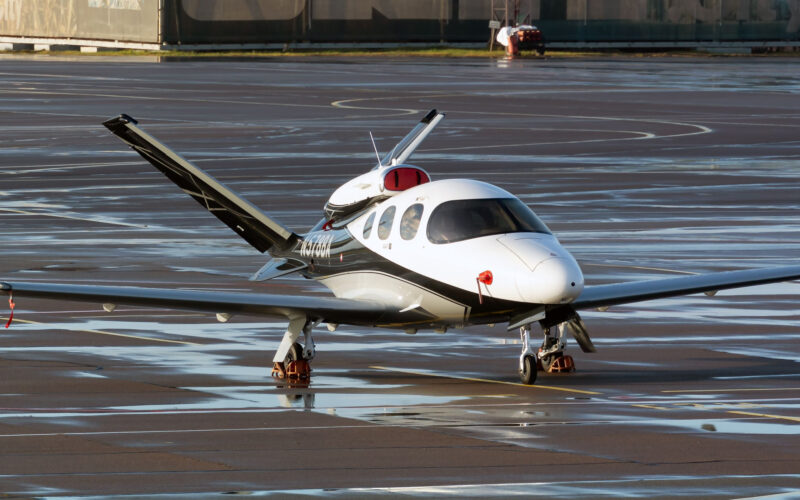Cirrus Vision Jet is The Perfect Aircraft for Personal and Business Aviation

The Cirrus Vision SF50, known as the Vision Jet, has made a significant impact in the aviation industry since its introduction 15 years ago. It is a very light jet (VLJ) designed to cater to the needs of both personal and business users.
Let’s explore the history of the Cirrus Vision Jet, its technical characteristics, innovative features, and its newest variants.
The aircraft’s history and purpose
The Cirrus Vision Jet, created by Cirrus Aircraft based in Duluth, Minnesota, was introduced in 2008 as a single-engine, low-wing aircraft. It took to the skies for the first time on July 3, 2008.
The Vision Jet was manufactured to fulfill the demand for a more accessible and user-friendly private jet. Cirrus Aircraft identified the need for an aircraft that would be suitable for personal travel, as well as serve the requirements of small businesses and regional transportation. By offering a unique combination of safety, affordability, simplicity, and advanced technology, Vision Jet aimed to make private air travel easier for a broader range of individuals.
Financial troubles at Cirrus
Cirrus faced some financial challenges during the development of Vision Jet. In 2009, due to the global economic downturn, the company encountered financial difficulties and had to temporarily suspend production. In 2011, Cirrus was acquired by the China Aviation Industry General Aircraft (CAIGA), a Chinese enterprise that provided the necessary funding for the project.
Following a decade of development fraught with financial troubles and technical hurdles, Vision Jet received certification from the Federal Aviation Administration (FAA) on October 28, 2016. This significant milestone marked the Cirrus Vision as one of the first single-engine jet to obtain type certification. Additionally, Cirrus secured approval from the European Union Aviation Safety Agency (EASA) in May 2017, allowing them to fulfill 15% of their orders scheduled for Europe.
Technical characteristics
The technical characteristics of the Cirrus Vision Jet are impressive. As a VLJ, it can accommodate up to six passengers and one pilot. The Vision Jet is equipped with a Williams FJ33-5A turbofan engine, which generates a thrust of 1,800 pounds. The aircraft has a maximum speed of 345 KTAS (knots true airspeed) and offers a range of approximately 1,200 nautical miles.
New technologies on board
The newest Vision Jet G2+ model introduced in 2021 incorporates cutting-edge technologies, including the Cirrus Perspective Touch+ avionics suite. This advanced system provides pilots with intuitive controls, synthetic vision, traffic monitoring, and automated safety features, enhancing situational awareness and improving overall flight safety.
Vision Jet also offers a high level of safety and reassurance with the integration of the Cirrus Airframe Parachute Recovery System – CAPS and Safe Return emergency autoland feature. Once activated, this system takes control of the aircraft, autonomously guiding it to the nearest airport for a safe landing.
Cabin design
The cabin of the Cirrus Vision Jet is designed to tailor convenient business commodities. It offers seating for up to six passengers, with ample legroom and panoramic windows, providing an expansive view of the surroundings. The aircraft’s cabin includes features such as reclining seats, fold-out tables, and a spacious baggage compartment.
The Cirrus Vision Jet provides versatile seating options with three different configurations: family seating, executive seating, and complete seating. Family seating offers a comforting arrangement where passengers can face each other, accommodating up to five adults and two children. Executive seating includes a console in the middle, providing a more professional setup for four adults. The complete seating option combines the best of both worlds, offering a variation that combines family seating with the addition of executive seating elements.
Cirrus Vision Jet variants
G2 Vision Jet
On January 8, 2019, the upgraded G2 version of the aircraft was unveiled, introducing significant enhancements. These improvements included the addition of a Reduced Vertical Separation Minimum (RVSM), allowing for a higher ceiling of 31,000 ft (9,400 m) and extending the range to more than 1,200 nautical miles (2,200 km). Alternatively, it offered the flexibility of carrying an additional 150 lbs (68 kg) of payload over 800 nautical miles (1,500 km).
The G2 variant was equipped with several notable features, such as an autothrottle, an updated flight deck, and upgrades to the cabin. This resulted in an increased cruise speed, transitioning from 304 knots (563 km/h) to 311 knots (576 km/h). Moreover, the base price of the aircraft was adjusted to $2.38 million, which could reach $2.75 million with optional features.
G2+
Cirrus made an announcement on July 20, 2021 regarding the introduction of the G2+ variant of the Vision Jet. This upgraded version offers a remarkable 20% boost in take-off performance along with the inclusion of in-flight WiFi. Moreover, the G2+ model boasts a slightly extended range and an increased payload capacity.
As of 2023, the equipped price of the G2+ variant was set at $3.25 million, making it the cheapest private aircraft in the market.
